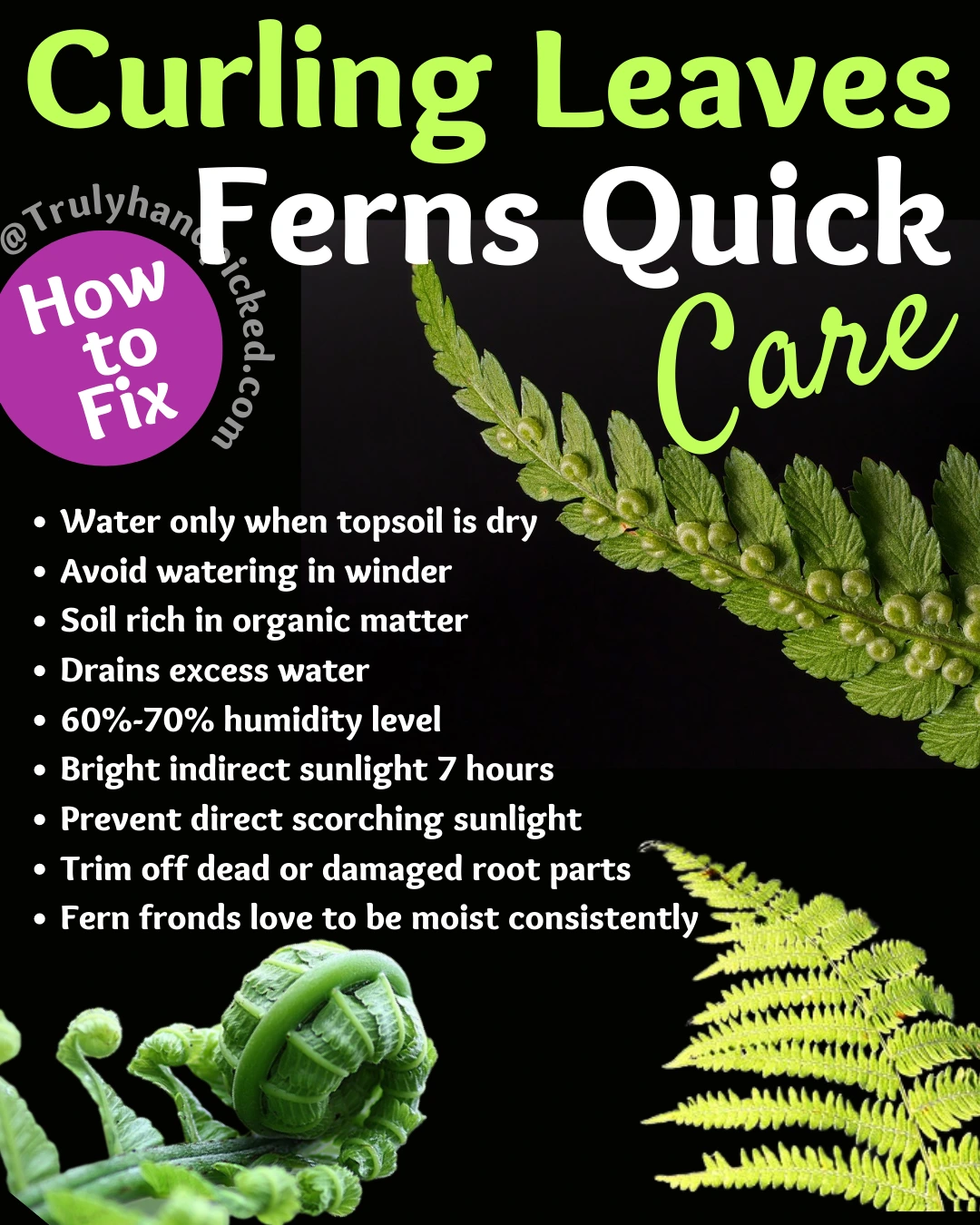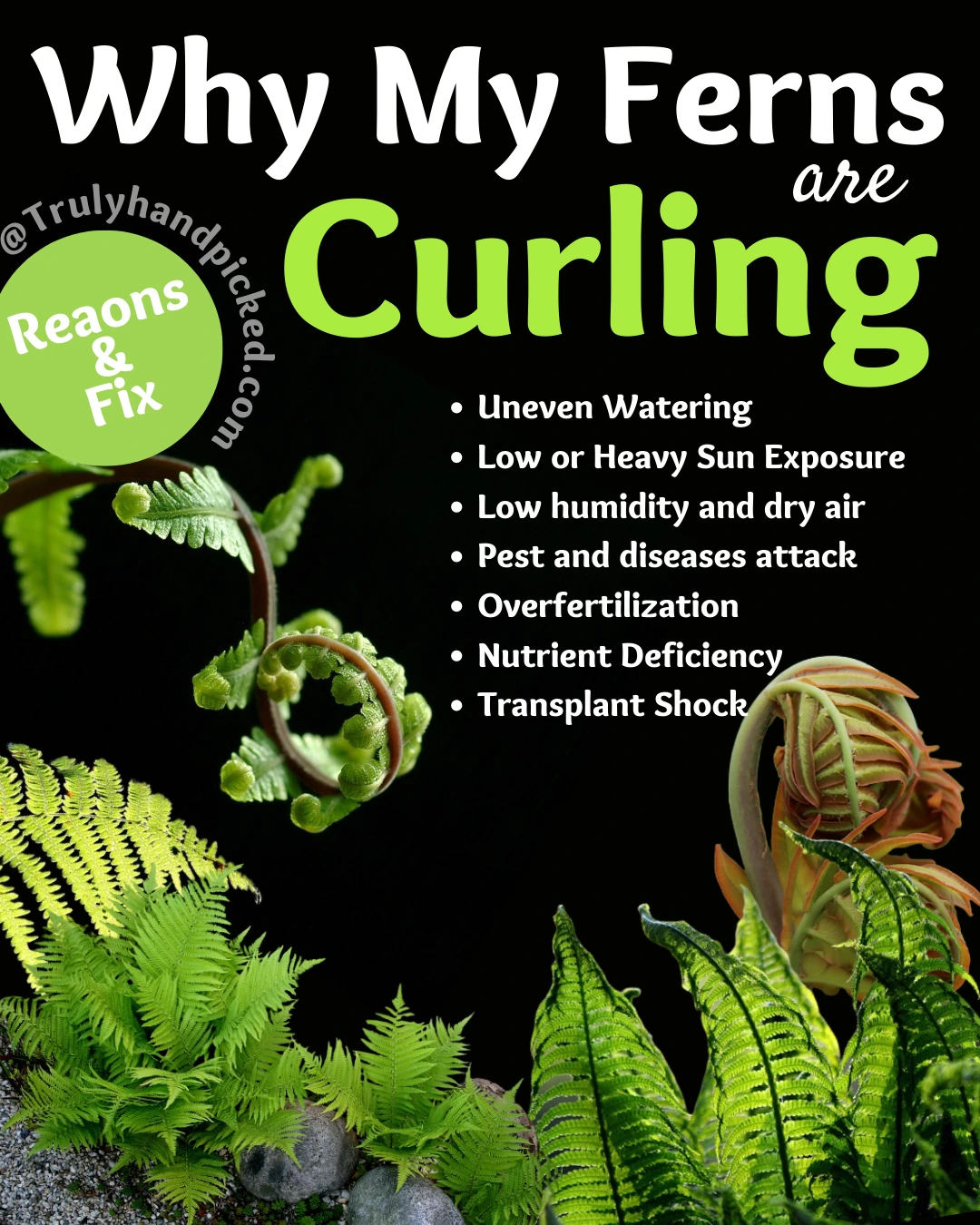Ferns come with tons of different species in their one receptacle. Most of the fern species need similar types of caring regimens. They usually require soberly warm temperatures, high humidity, a bright environment, and plenty of water to thrive with shiny, pointy fronds.
Any kind of conciliation in these essential needs can drive unhealthy foliage in your fern plant. Curling leaves is a common problem many gardeners face these days with a growing fern plant. No matter, what the reason is, a fern with curly fronds never appears classy, as it can be in its normal form.
Curly leaves are also a sign of some unhealthiness in your fern plant. This must be cured as soon as probable to prevent your plant from having fatal outcomes further!
Here are some must-know facts about this topic to identify the reasons and fix them efficiently in the easiest manner-
Why Are Leaves of My Fern Start Curling?
Fronds in a fern plant can appear for varieties of reasons. To eliminate the issue from your fern plant, you must identify its actual reason and shall apply the precaution accordingly. The most typical causes of curled leaves in a fern plant are, as follows-
Uneven Watering:
The fern plant is a thirsty one and needs lots of water to thrive. But they appropriately grow when they get the accurate amount of water that they want exactly. Curly leaves may occur if you make these mistakes during watering-
- Underwatering: Keep your plant dehydrated for long
- Overwatering: Water it unnecessarily and excessively
Related: How to save an overwatered rubber plant
Unsuitable Climate:
Any kind of unfitting circumstance can also cause curly leaves in your fern plant. They are very particular about their growing atmosphere.
Even the mildest error in their growing climate can drive this curly leaves problem in your plant unavoidably. Some common issues your fern plant could get in this category are-
- Keep them at a temperature of more than 80° F or less than 55° F
- Placed your plant in the wrong spot with low humidity and dry air
Low or Heavy Sun Exposure:
Like climate, your fern plant is vulnerable to sun exposure as well. Too much direct sunlight or a completely shady place often brings curly fronds to your fern plant. Common mistakes you may make in this topic, are-
- Keeping your plant under direct sunlight and unprotected during scorching noon time
- Placing the planter of your plant in a completely shady spot with no sunlight at all
Overfertilization:
Too much fertilizer is another common reason for having curly fronds in your fern plant. Ferns are moderate feeders and must be fertilized, when they seem hungry or infrequently throughout the year.
Too much fertilization could store extra salt buildup in the roots as well as stems of your plant. This issue occurs for these common faults-
- If you fed your plant more than 3-4 times a year
- When you don’t apply fertilizer in diluted form with half of the strength
Related: Steps to Make Organic Fertilizers at Home
Nutrient Deficiency:
Like overfertilization, nutrient deficiency is another typical cause of curly leaves in a fern plant. You should keep your plant moderately fertile to fulfill the nutrient requirements adequately.
Keep your plant unfertilized for more than 3 months consequently can drive curly fronds for sure. These mistakes always work behind this nutrient deficiency issue-
- Keeping their plant unfertilized or low in phosphorus content
- Letting the plant suffer from low-nitrogen fertilizer while focusing on phosphorus content
Wrong Potting Mix/Medium:
Your fern plant also needs loose, well-drained, and properly fertile potting soil to thrive accordingly. If you allow any mismanagement of these qualities, the fronds of your fern plant could get curls shortly.
Usually, these common mistakes can drive you to pick the wrong growing medium, while planting your fern plant-
- Potting soil with low perlite or sand or vermiculate ratio
- Soil with low-acidic quality and wrong pH level
Untreated Pests and Diseases:
Keeping your plant unprotected from the grasp of insects or letting them destroyed by deadly diseases can also invite curly leaves in ferns.
No matter how mild the stage is, any kind of this nuisance could be cured of your fern plant instantly. Some common negligence that drives curly leaves problems in your plant are-
- Staying inattentive towards your fern plant or don’t apply any pesticide ever
- Tolerating the poor drainage system of your plant for a long that invites diseases inescapably
Transplant Shock:
This may be last but one of the main causes of having curly leaves in your fern plant. Ferns may be easy-to-maintained, but they are susceptible and thus, act impulsively towards the mildest shaking. You should always be very careful while repotting them from one planter to another. Some typical mistakes that initiate transplant shock and cause curly leaves in your plant are-
- When you damage any roots of your plant during the replantation
- If you don’t place your fern in a suitable spot after the transplant

How to Revive My Ferns & Get Curly Leaves Normal Again?
To prevent and revive those curly leaves in your fern plant, try these simple yet effective hacks appropriately-
Water Only When it’s Dry:
- Practice 1- 1½ inches deep watering every time your water your plant
- Let 1-2 inches of the topsoil dry before watering
- Avoid watering during dormancy
Go for a Fresh Potting Mix :
- Ferns love soil rich in organic matter
- Give your soil a good rinse of water to flesh extra fertilizer out
- Check the acidity level of the soil and let it balance for the right pH level (depends on your fern variety)
- Make sure the potting mix is fresh and drains well
Look For Proper Drainage:
- Be certain that the potting mix ratio is loose enough to drain the excess water fast
- Use a planter with properly working drainage holes
- Check the drainage of excess water every time you water your plant
Adjust Spot for Better Humidity:
- Place the planter in a spot with a 60%-70% humidity level
- To maintain humidity, you place your fern planter on a plate with water and pebbles
- Increase the temperature of your room where you place the planet
- Use the artificial device to control the extra dryness of the air and increase the airflow
Provide Enough Sunlight:
- Bring the planter under sunlight, and use minimal shade from direct sunlight
- Let your plant soak in bright indirect sunlight for more than 7 hours a day
- Don place under direct sunlight, it may burn and turn your leaves crispy
Feed Adequately:
- Feed your plant with a balanced and diluted fertilizer once every other month
- Actively feed during growing seasons (early spring to autumn) and don’t feed your plants in winter
- Check for the curl types of the fronds and apply the fertilizer accordingly
- Feed your plant with phosphorous-rich fertilizer for top frond curls and high-nitrogen fertilizer for lower frond-curls
Look For The Root Rot and Dead Leaves:
- Remove every dead or discolored frond from your plant
- If your plant seems to be dying, check the roots, take out the entire plant and inspect the root closely
- Eliminate dead or damaged root parts soon, if you detect any on your plant before replanting them
- If needed go for hydrogen peroxide wash to revive your plant from root rot
Attend Pests and Diseases Asap:
- First of all, you need to be certain about the actual problem whether it is an insect or disease
- To treat insects, make a mixture combining liquid soap, water, and horticulture oil or neem oil to give your plant a good rinse
- To cure fungal or bacterial disease, simply change the planter as well as the planting soil and pick new sets with good drainage quality.
FAQ:
Should I Mist Fern Leaves to Keep Them Healthy?
Fern fronds love to be moist consistently. Hence, misting them once a week would be a nice idea indeed. It will fulfill their moistening desire properly without making the growing medium soggy or overwatered.
